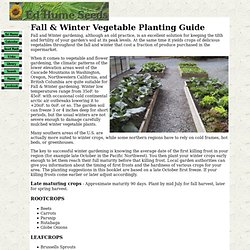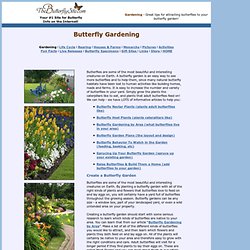

Raised Garden Beds. Lay out the beds so they are horizontally facing south It's best if the long side of the bed faces south. This assures equal light exposure to all the plants growing in the bed. If your bed is aligned the other way (the ends facing south), you may have planting limitations because taller plants in front can block the sunlight to small plants in back. Double-dig the bed area If the ground has never been used for gardening, it should be 'turned over' (dug) to a depth of 16". Check for roots As you dig the soil, keep an eye out for any roots which may be growing beneath your beds. Level the bed Use a level for this task. Burrowing pests? If your garden has burrowing pests such as moles, a layer of 1/2" or 1/4" hardware cloth (galvanized mesh) can be laid across the bottom, before soil is added.
Spread soil out evenly Add any planned soil amendments, such as peat, compost or lime, and spread the soil evenly across the bed. Avoid stepping on the bed Mulch the pathways between beds. Guide to Container Gardening. To Page 2>> Container Gardening (Page 1) Even the smallest patio or porch can boast a crop of vegetables or a garden of flowers in containers.

Planter boxes, wooden barrels, hanging baskets and large flowerpots are just some of the containers that can be used. The container gardener is limited only by his imagination. Consider the following guidelines when choosing your container. Avoid containers with narrow openings. Growing Mixture Make sure your planting medium drains rapidly but retains enough moisture to keep the roots evenly moist. Most container gardeners have found that a "soilless" potting mix works best. When you add your soil to your container, leave a 2 inch space between the top of the soil and the top of the container.
Sunlight Container GardeningThis 32-page booklet is part of Storey Publishing's Country Wisdom series. Your container garden will need at least five hours of direct sunlight each day, and many plants will benefit from even more. Fertilizer Watering Annuals. Eight How-To Steps for Growing Healthy Indoor Herbs. There are some very good reasons why people opt for growing herbs indoors. If you have limited, or non-existent, garden space you can still enjoy the benefits of herbs, whether you use them for cooking, healing or simply creating a fragrant environment. Once you gain some experience, herbs are easy to manage and you won’t need to brave the winter ice and rain to tend them.
Follow the tips below and your green fingers may surprise you. 1. Choose the right herbs Like people, some herbs thrive indoors while others prefer the outdoor life. 2. If you have a south or south-easterly facing window, this is usually the best spot for indoor herbs (if you live in the northern hemisphere). 3. Garden soil is highly likely to contain diseases, pest eggs and weed seeds, as well as providing poor draining. 4. There are no hard or fast rules about watering since some herbs (e.g. mint) require more water than others. Fall and Winter Vegetable Planting Guide. Fall and Winter gardening, although an old practice, is an excellent solution for keeping the tilth and fertility of your garden's soil at its peak levels.

At the same time it yields crops of delicious vegetables throughout the fall and winter that cost a fraction of produce purchased in the supermarket. When it comes to vegetable and flower gardening, the climatic patterns of the lower elevation areas west of the Cascade Mountains in Washington, Oregon, Northwestern California, and British Columbia are quite suitable for Fall & Winter gardening. Winter low temperatures range from 35oF. to 45oF. with occasional cold continental arctic air outbreaks lowering it to +20oF. to 0oF. or so. The garden soil can freeze 3 or 4 inches deep for short periods, but the usual winters are not severe enough to damage carefully mulched winter vegetable plants.
Late maturing crops - Approximate maturity 90 days. Beets Carrots Parsnip Rutabaga Globe Onions Early Carrots Leek Turnip Kohlrabi Cloches. Butterfly Garden: Articles on Creating Butterfly Gardens: Plans, Plants, Attracting Butterflies, More. Butterflies are some of the most beautiful and interesting creatures on Earth.

A butterfly garden is an easy way to see more butterflies and to help them, since many natural butterfly habitats have been lost to human activities like building homes, roads and farms. It is easy to increase the number and variety of butterflies in your yard. Simply grow the plants the caterpillars like to eat, and plants that adult butterflies feed on! We can help - we have LOTS of informative articles to help you: Create a Butterfly Garden Butterflies are some of the most beautiful and interesting creatures on Earth. Creating a butterfly garden should start with some serious research to learn which kinds of butterflies are native to your area. Once you have done your research and know which kinds of plants you need, you should learn about the plants and flowers. Check with a local greenhouse about getting these plants and flowers.